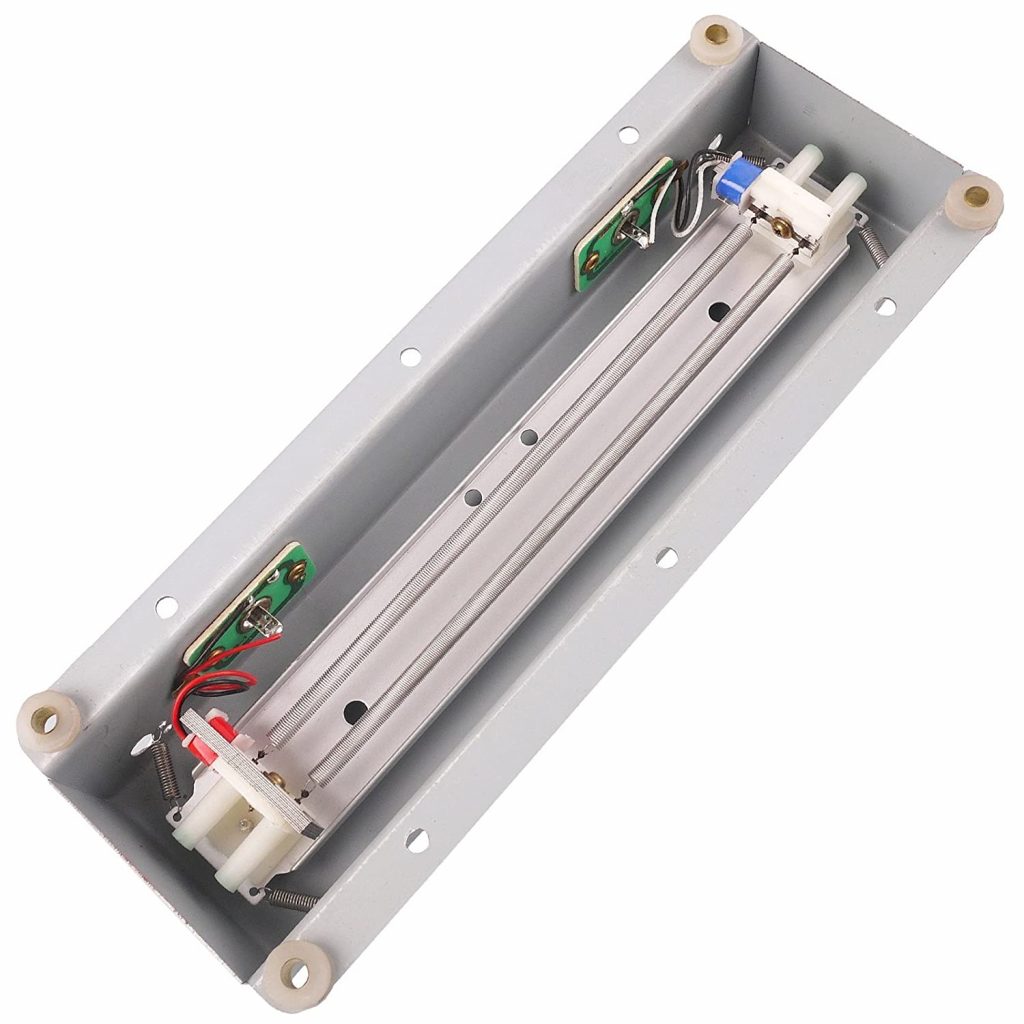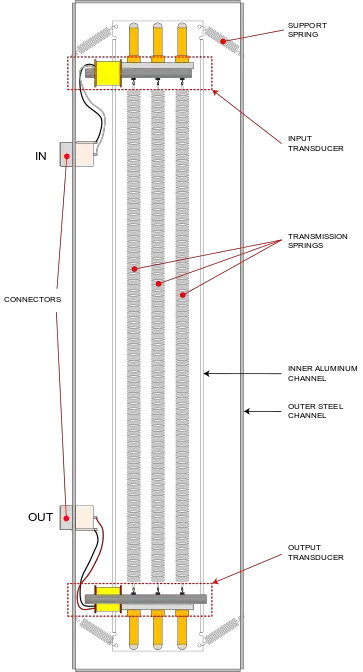Are you curious to know how does spring reverb work? Then read this article till the end.
When you think about the words “spring reverb,” what comes to mind? If you’re like most people, you might think of a metal coil that is used to produce a reverberating sound.
While this is technically correct, there’s much more to it than that. In this article, we’ll take a closer look at spring reverbs and how they work.
First off,
Table of Contents
What is a Spring Reverb

Spring reverb is a special type of reverb that’s been super popular since the 1960s. By feeding a sound through springs, it creates the illusion of reverb. The result is a metallic, otherworldly echo.
There are tons of software versions out there, but the original spring reverbs are hardware. Many guitar amps and professional studios use these hardware units even today.
It’s a must if you’re writing rock, blues, reggae, or really anything with electric guitar. But its uses go way beyond that.
Spring reverb has an extremely unique sound, making it perfect for all kinds of effects.
Disclosure: This post may contain affiliate links, which means we may receive a commission if you click a link and purchase something that we recommended. Read more about Affiliate disclosure here.
Read also,
- 10 Reverb Mistakes You Often Do: Stop Them And Your Songs Will Rock!!
- 8 Best Reverb Plugins 2024 [Only Best Once]
Who Invented Spring Reverb? History…
The history of spring reverb is a bit murky. It’s hard to say who invented it first, or when it was actually invented.
The first spring reverbs were invented in the late 1930s. These units were huge, bulky, and expensive. They were also very temperamental.
What we do know is that spring reverbs have been around since the late 1930s. These early units were large, expensive, and difficult to use.
It wasn’t until the 1960s that spring reverbs became popular. This was thanks to amplifier companies like Fender and Vox incorporating them into their products.
How Does Spring Reverb Work

A spring reverb is a type of reverberation that uses one or more metal springs to create an echo effect. Spring reverbs have been popular since the 1960s, and are still in use today.
The Way it Works is Simple:
First, the sound is generated. This can be done with an instrument or a microphone.
Next, the sound is sent into the springs. The springs are usually located inside a metal box.
As the sound waves travel through the springs, they cause them to vibrate. This vibration is what creates the echo effect.
Finally, the sound is amplified and sent out through a speaker.
The result is a unique, metallic echo that can be used to create all kinds of interesting sound effects.
How Does a Spring Reverb Create Echo?

The way a spring reverb creates echo is by vibrating the springs inside of a metal box. This vibration is what creates the reverberation effect.
The springs are usually located inside a metal box, and the sound is sent into the springs. As the sound waves travel through the springs, they cause them to vibrate.
This vibration is what creates the echo effect. Finally, the sound is amplified and sent out through a speaker.
The result is a unique, metallic echo that can be used to create all kinds of interesting sound effects.
How Can Spring Reverbs be Used to Create Interesting Sound Effects?
Spring reverbs can be used to create all kinds of interesting sound effects. By feeding a sound through springs, it creates the illusion of reverb. The result is a metallic, otherworldly echo.
There are tons of software versions out there, but the original spring reverbs are hardware. Many guitar amps and professional studios use these hardware units even today.
It’s a must if you’re writing rock, blues, reggae, or really anything with electric guitar. But its uses go way beyond that.
Spring reverb has an extremely unique sound, making it perfect for all kinds of effects.
Advantages of Using a Spring Reverb
There are a few reasons why you might want to use a spring reverb:
- Spring reverbs have a unique, metallic echo that can be used to create all kinds of interesting sound effects.
- They are perfect for creating an “otherworldly” sound.
- Spring reverbs are very versatile and can be used for a variety of genres, including rock, blues, and reggae.
- They are a must-have for electric guitarists.
- Spring reverbs are relatively inexpensive and easy to find.
Disadvantages of Using a Spring Reverb
While there are many advantages to using a spring reverb, there are also a few disadvantages:
- Spring reverbs can be noisy.
- They can produce feedback if not used properly.
- They require a bit of trial and error to get the perfect sound.
- Spring reverbs are not always easy to find.
- They can be expensive.
How to Use a Spring Reverb
Now that you know how a spring reverb works, let’s talk about how to use one.
If you’re using a spring reverb for the first time, there are a few things you should keep in mind:
Start with the input level. The input level is the amount of signal that is being sent into the springs. If the input level is too high, it can cause feedback.
Start with the mix. The mix is the balance between the dry signal and the wet signal. The wet signal is the signal that has been sent through the springs.
If the mix is too high, it will sound like the springs are reverberating inside of your head.
Start with the decay. The decay is how long the echo will last. If the decay is too long, the echo will be too overwhelming.
Start with the low-cut filter. The low-cut filter is used to remove low frequencies from the signal. This can help to reduce muddiness and make the echo more distinct.
As we mentioned before, spring reverbs have a unique, metallic echo that can be used to create all kinds of interesting sound effects. They are perfect for creating an “otherworldly” sound.
Spring reverbs are very versatile and can be used for a variety of genres, including rock, blues, and reggae. They are a must-have for electric guitarists.
Conclusion
We hope this article has helped you to understand how a spring reverb works.
Spring reverbs are a great way to add an otherworldly echo to your sound.
They are perfect for electric guitarists and can be used for a variety of genres.
While they can be noisy and may require some trial and error to get the perfect sound, the unique metallic echo they create is well worth the effort.
FAQ
How do I use a spring reverb?
If you’re using a spring reverb for the first time, there are a few things you should keep in mind. Start with the input level.
The input level is the amount of signal that is being sent into the springs. If the input level is too high, it can cause feedback. Start with the mix. The mix is the balance between the dry signal and the wet signal.
The wet signal is the signal that has been sent through the springs. If the mix is too high, it will sound like the springs are reverberating inside of your head. Start with the decay.
The decay is how long the echo will last. If the decay is too long, the echo will be too overwhelming.
Start with the low-cut filter. The low-cut filter is used to remove low frequencies from the signal.
This can help to reduce muddiness and make the echo more distinct. As we mentioned before, spring reverbs have a unique, metallic echo that can be used to create all kinds of interesting sound effects.
They are perfect for creating an “otherworldly” sound.
What genres is a spring reverb good for?
Spring reverbs are very versatile and can be used for a variety of genres, including rock, blues, and reggae. They are a must-have for electric guitarists.
Is a spring reverb the right choice for me?
Only you can answer that question. Spring reverbs have a unique sound that may or may not be what you’re looking for. If you’re unsure, we recommend trying one out to see if you like the sound. They can produce feedback if not used properly. They require a bit of trial and error to get the perfect sound.
Read also,


![Top 10 Best MIDI Controller Keyboards For FL Studio [2024]](https://www.recordingbase.com/wp-content/uploads/2023/04/Best-MIDI-Controller-Keyboards-For-FL-Studio.png)



